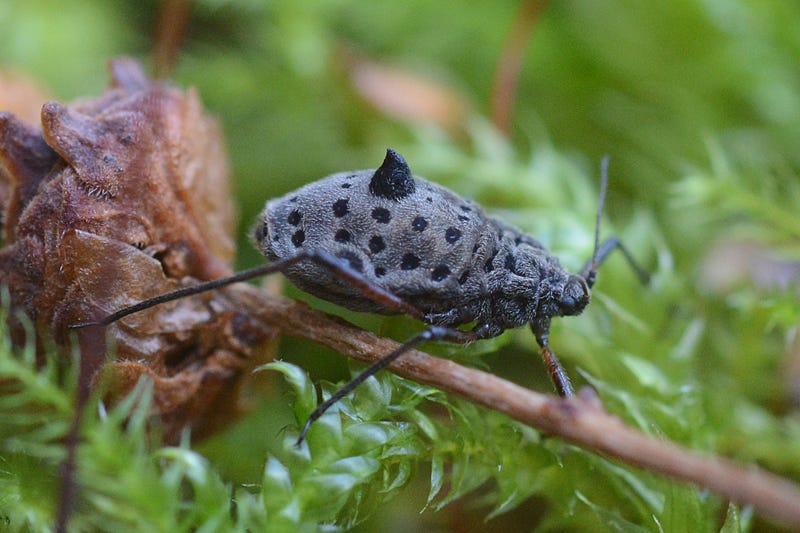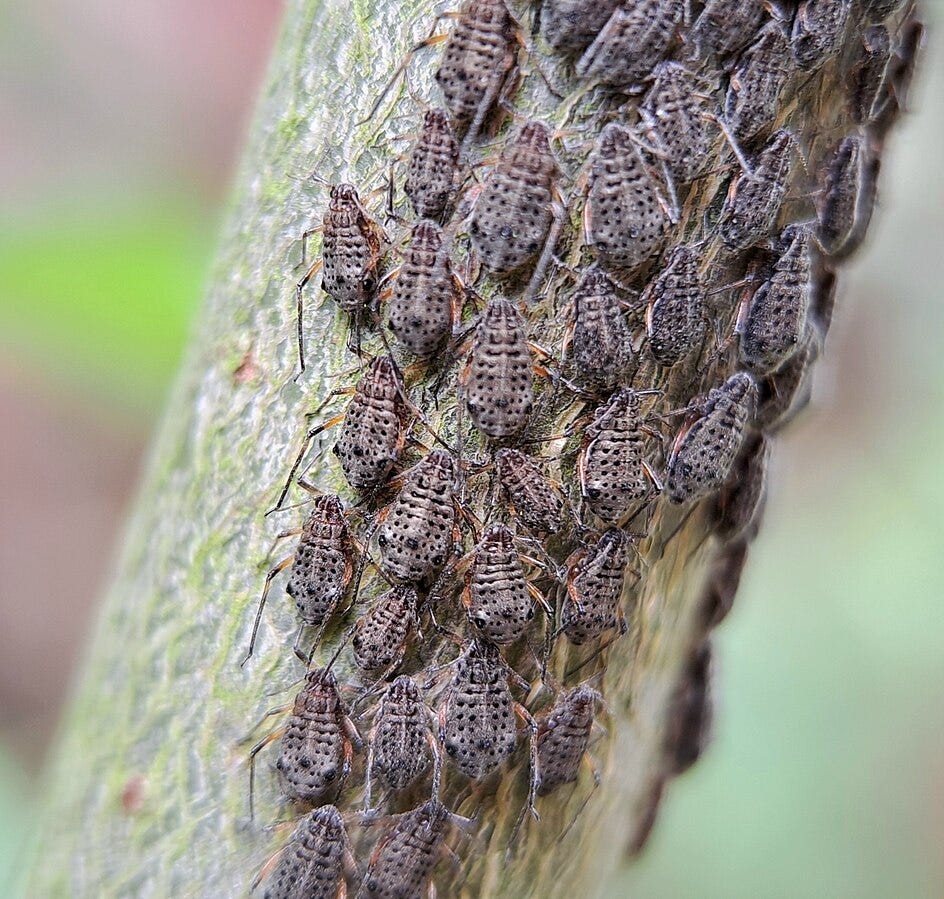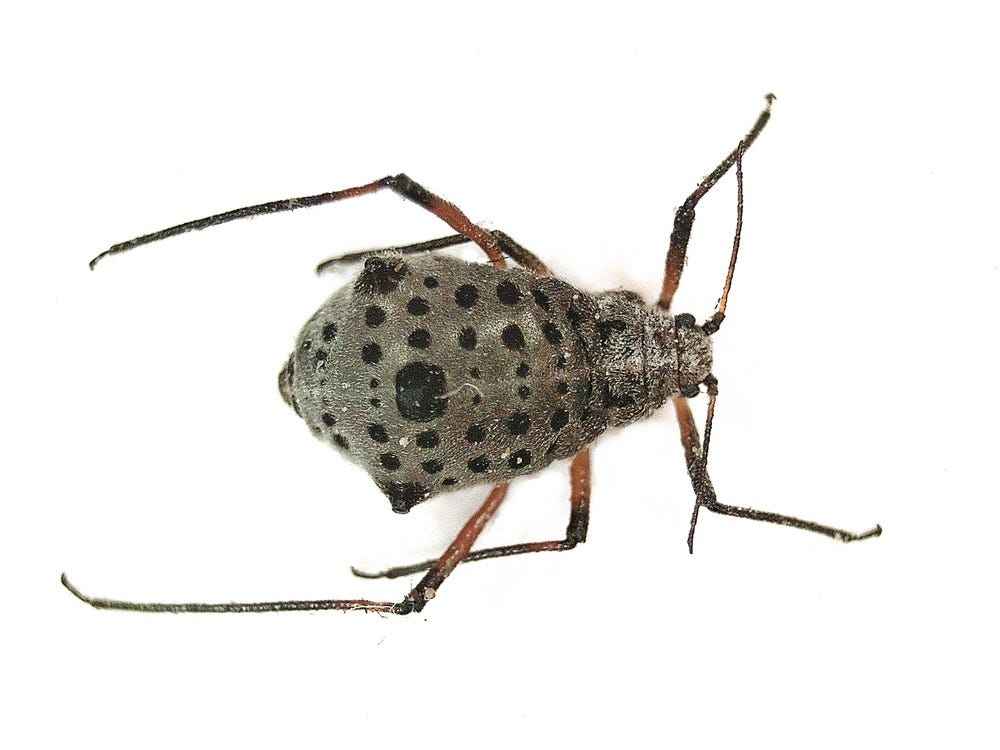Tiny Architects of Biodiversity
Imogen zooms in to look at the ecological role of the large willow aphid
The willow, with its graceful branches and often silvery leaves, is a quintessential feature of the Scottish landscape. Often rooted by riverbanks, it bridges land and water, embodying quiet beauty in nature’s most peaceful spaces. Willow trees are a habitat to a diverse range of wildlife, supporting a variety of species, from insects and birds to fungi and mammals. Among the insect inhabitants, sawflies, beetles and caterpillars thrive on willow leaves and stems. In addition, tiny gall mites create abnormal growths on the leaves and branches, using the tree as both food and shelter.
However as the chill sets in and nature seems to slow down a little this season, there is a hidden opportunity to see another of the willow’s guests. This season, I invite you to keep one eye open for a fascinating creature – the large willow aphid, Tuberolachnus salignus. Despite the cold, these little creatures offer a whole world of discovery right on our doorstep.
The large willow aphid, makes its home primarily on the stems and branches of willows and sallows, (and occasionally apple trees). These aphids can be found in a wide range of geographical locations where willows are abundant, including Scotland.

They often form large and reasonably dense colonies, a sight that can be both alarming and fascinating. Fear not though! These aphids are not doing any harm to the willows on which they live.
Aphids extract sap from the bark of trees and plants, releasing a sugary liquid called honeydew in the process. This honeydew coats the plant and the surrounding ground, creating a sticky surface that attract wasps and flies, which rely on it as a food source. Some wasps will consume aphids, which can be helpful in the greenhouse!
On the willow, there then follows a growth of black sooty mould, a harmless fungus that also thrives on the sugary residue. This mould doesn’t harm the plant directly, though many gardeners dislike the way it looks. What is actually unfolding is a natural cycle of inteconnection. These aphids are contributing to the rich biodiversity that healthy willow trees can sustain, forming the foundation of a food chain.
Identifying the Large Willow Aphid
The large willow aphid is as the name suggests a relatively large size for an aphid, measuring between 5 and 6 millimetres - in fact its one of the largest aphids in the UK! They are typically mid-brown to dark brown in colour, with their appearance further distinguished by several rows of black sclerotic patches along their bodies. Their texture is notable for the fine hairs that cover them, which gives a greyish-golden sheen, particularly evident on the abdomen. A unique feature is the large, dark brown tubercle. This hardened protrusion, looks a little like a sharks fin visible towards the centre of their back and makes them easier to identify.
These wee creatures also exhibit a fascinating reproductive process. Unlike many other species, they do not engage in a sexual phase of reproduction, but rather undergo a process, known as anholocyclic reproduction. This allows them to rapidly and effectively increase their numbers without the need for mates.
A further intriguing aspect of these aphids is curious seasonal activity. They are most active from July through to early March, with their presence peaking around October. However, they vanish almost entirely in the spring and early summer - from April to July. This disappearance, a break in an otherwise consistent cycle, is as yet unexplained.
Where do they go? This question provides a source of speculation for naturalists.
The best time to observe these aphids is from now until late November. If and when you spot them, please document your findings, including the date, location, and the plant they were on. Clear, detailed photographs are incredibly helpful, when making recordings.
If you are in Highlands the guide to submitting records to the Highland Biological Recording Group (HBRG) can be found here:
The Highland Biological Recording Group (HBRG) plays a pivotal role in the study and conservation of wildlife in the Highlands. They have been at the forefront of gathering and analysing data on various species, including the elusive Large Willow Aphid.
Your recordings will contribute significantly to understanding the life cycle of these aphids, particularly their mysterious disappearance in the spring months. these records are really helpful for ecological studies.
Further Identification resources available from InfluentialPoints.com
InfluentialPoints.com is an invaluable resource for anyone interested in the detailed biology and ecology of aphids. The site offers comprehensive information about the life cycles, habitat preferences, and inter-species interactions of many aphids, including the Large Willow Aphid- Tuberolachnus salignus. There is information there which is useful for understanding broader ecological impact of these insects as well as for accurately identifying them in the field.
Citizen scientists are becoming increasingly essential in bridging the gap between professional research and public knowledge.
So, as you don your winter coat and step into the garden, woodland or park, keep your eyes peeled for these fascinating insects. Your contributions as a citizen scientist may help unravel the mysteries of the Large Willow Aphid. Let's embrace this change in season as a time of discovery and learning.
Happy observing, and stay tuned for more nature's wonders!
The High Life Highland Service work in partnership with The Highland Biological Recording ground to promote the recording of sightings in Highland of a wide range of insects, plants and animals.
Imogen Furlong, the High Life Highland Countryside Ranger Manager, is known for her enthusiasm, organisation, and drive. Her deep passion for the Scottish Highlands' wildlife and extensive experience in outdoor education and recreation management have been central to this role. Imogen is a practical and collaborative project manager, empowering her teams to work effectively in communities and contribute to local conservation efforts.







I'll need to keep an eye out for those next time I'm passing a willow tree! Thanks for the information.